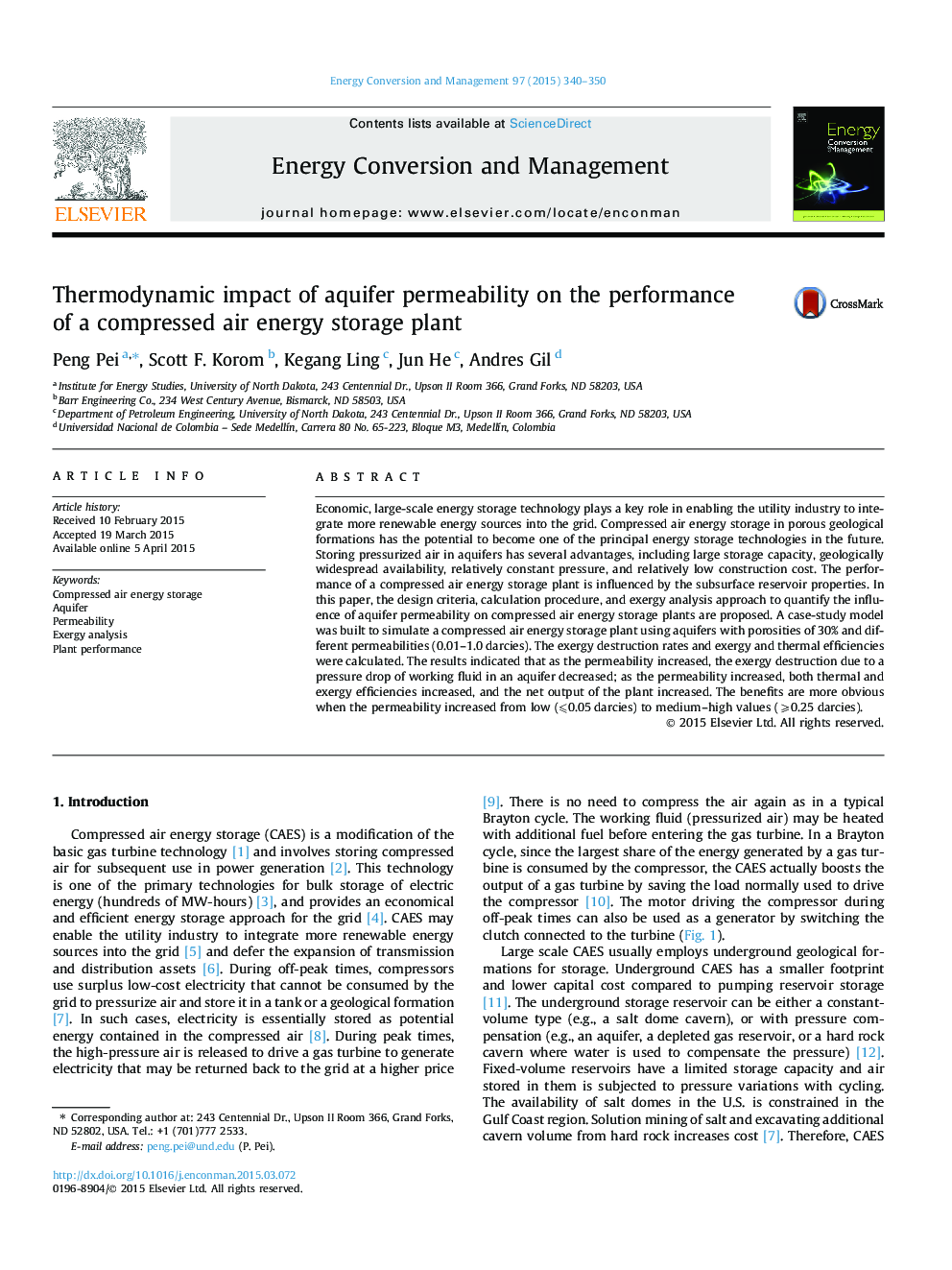| Article ID | Journal | Published Year | Pages | File Type |
|---|---|---|---|---|
| 760581 | Energy Conversion and Management | 2015 | 11 Pages |
•Design procedure of an aquifer compressed air energy storage system was proposed.•An approach to select aquifers with adequate permeability was presented.•Applied an exergy analysis to exam the impact of permeability on plant economics.•The exergy destruction in the aquifer was reduced as the permeability increased.
Economic, large-scale energy storage technology plays a key role in enabling the utility industry to integrate more renewable energy sources into the grid. Compressed air energy storage in porous geological formations has the potential to become one of the principal energy storage technologies in the future. Storing pressurized air in aquifers has several advantages, including large storage capacity, geologically widespread availability, relatively constant pressure, and relatively low construction cost. The performance of a compressed air energy storage plant is influenced by the subsurface reservoir properties. In this paper, the design criteria, calculation procedure, and exergy analysis approach to quantify the influence of aquifer permeability on compressed air energy storage plants are proposed. A case-study model was built to simulate a compressed air energy storage plant using aquifers with porosities of 30% and different permeabilities (0.01–1.0 darcies). The exergy destruction rates and exergy and thermal efficiencies were calculated. The results indicated that as the permeability increased, the exergy destruction due to a pressure drop of working fluid in an aquifer decreased; as the permeability increased, both thermal and exergy efficiencies increased, and the net output of the plant increased. The benefits are more obvious when the permeability increased from low (⩽0.05 darcies) to medium–high values (⩾0.25 darcies).
